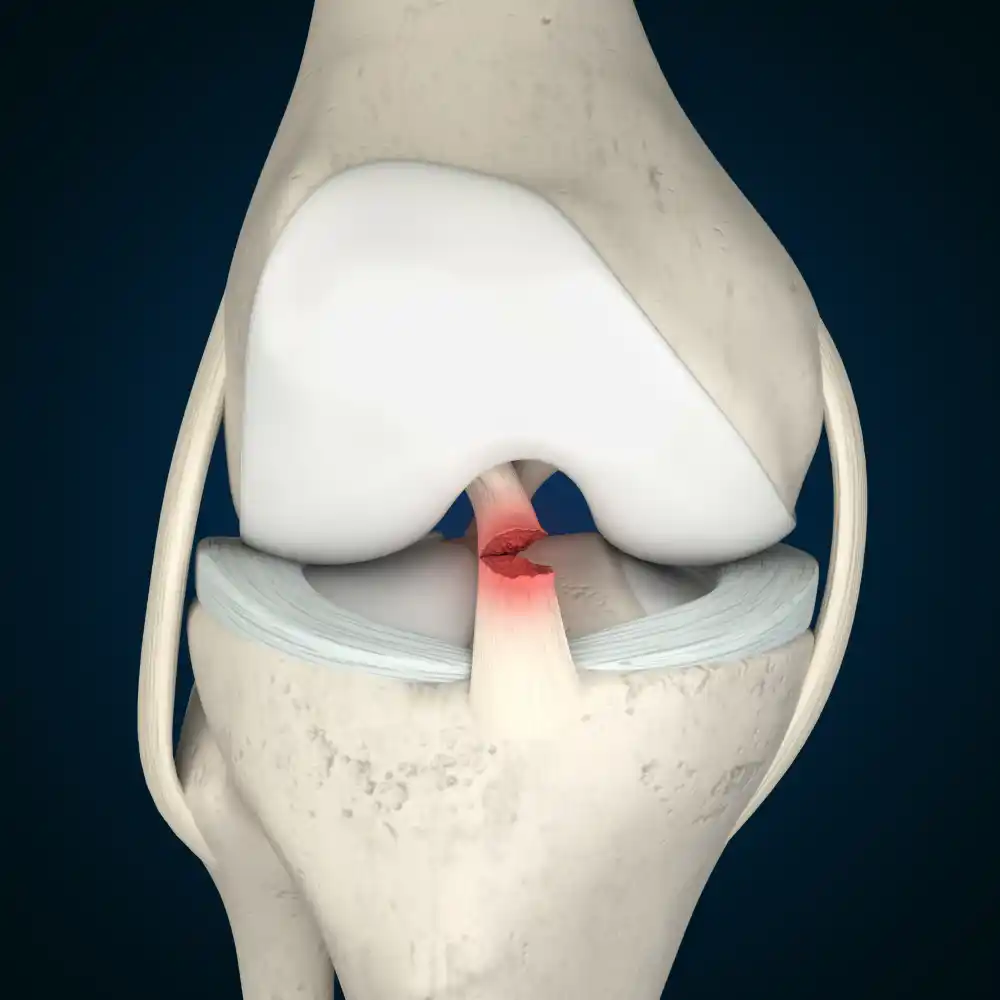The knee is an extraordinarily hard working element of the body, particularly for an athlete. The strength, flexibility, and endurance of your knees allows you to run, jump, squat, pivot, and perform all the actions you need, both on the field and on a day-to-day basis. If your knees are injured, your entire life can be put on hold.
Dr Vonda Wright, MD, MS, FAOA is a double-board certified orthopedic knee surgeon and meniscus specialist who is highly experienced in treating injuries of the knee, both surgically and non-surgically. Her comprehensive approach to musculoskeletal wellness harnesses innovative surgical and orthobiologic techniques, and her extensive research background gives her the necessary knowledge to apply cutting-edge rehabilitative care focused on helping you return your knees to peak performance.
If you’re ready to receive top-level care from one of the best ACL doctors in the nation, it’s time to get started with Dr. Vonda Wright. Use our online tool to schedule your first appointment with Dr. Wright today.

The meniscus is one of the most commonly injured parts of the knee. It is a wedgelike cushion located in the knee where the major bones of the leg connect. It acts as a strong, stabilizing tissue, and it allows the knee joint to carry weight, glide and turn in different directions. The meniscus keeps your femur (thighbone) and tibia (shinbone) from grinding together.
Some of the most common symptoms associated with a meniscus tear include:
Injuries of this tissue may result from an acute trauma to the knee, by twisting, pivoting, cutting or decelerating. The meniscus can also be injured without any acute trauma, since the tissue gradually weakens and wears thin over time. Diagnosis of this injury involves physical examination as well as imaging studies, such as an X-ray or MRI, to rule out osteoarthritis and examine the soft tissue of the joint.
Tears of the meniscus are commonly associated with tears of the anterior cruciate ligament, also known as the ACL. ACL injuries occur more than 250,000 times per year in the United States. The majority of these injuries require ACL reconstruction surgery to restore the knee to full functionality.
A meniscus tear can sometimes be treated without a need for meniscus surgery. Non-surgical treatments typically include rest, ice, compression and elevation combined with anti- inflammatory medications for pain. These treatments have proven effective, since the blood vessels feeding the outer edges of the meniscus allow your body to heal itself on its own. However, if your knee does not heal on its own and remains painful, stiff or locked, Dr. Wright will recommend arthroscopic knee surgery.

The kneecap (patella) connects the muscles of the front of the thigh to the shinbone (tibia). The thigh bone (femur) has a groove that enables the kneecap to move up or down as you bend or straighten your leg. A groove that is uneven or too shallow will result in a partial or complete knee dislocation. This could also occur as the result of an acute trauma to the knee, such as a sharp blow sustained through a fall. This is known as a medial patellofemoral ligament injury.
Symptoms of patellar instability may include:
When diagnosing an MPFL tear, Dr. Wright will typically perform a physical examination during which she evaluates the strength of the thigh muscles or takes measurements to see if the bones are out of alignment. Dr. Wright may ask you to walk around, or to straighten and bend your knee. X-rays may be
necessary to determine how the kneecap fits into its specified groove.
The initial step in treating kneecap dislocation is returning it to its proper groove in a process known as reduction. This can occur spontaneously, but will sometimes require an orthopedic sports medicine doctor like Dr. Wright to administer a gentle push to get it back in place. For chronic cases of kneecap dislocation, or a dislocation that damages the underside of the kneecap and the end of the thigh bone, an arthroscopic procedure such as MPFL surgery or MPFL reconstruction will be recommended.
Nonsurgical treatments such as exercise and a brace are recommended when the kneecap is only
partially dislocated. This will help to strengthen the muscles of the thigh to help hold the knee in place.

When an orthopedic sports medicine doctor and surgeon like Dr. Wright performs arthroscopic knee surgery, she will make two tiny, minimally-invasive incisions in your knee, then insert a tiny tool with a camera attached called an arthroscope. This allows Dr. Wright to view the inside of your joint without opening the entire knee. Then, Dr. Wright will trim away pieces of damaged cartilage, leaving only healthy cartilage to strengthen and grow.
Yes. Whether you require surgery or not, physical therapy is an important part of ensuring that your knee returns to its peak performance following your injury and treatment. Be sure to follow all of Dr. Wright’s instructions when it comes to physical therapy.
Every patient is unique, and your recovery period will depend on a wide range of personalized factors. Dr. Wright will advise you on your length of recovery during your consultations, and she and her team will be with you at each step of your rehabilitative process.
When you’re ready to find relief for your knee pain and return to peak performance in whatever you do, Dr. Vonda Wright is ready to help you meet your goals. Use our online tool to schedule your first appointment with Dr. Wright, or contact her Orlando office at (407) 965-4114.